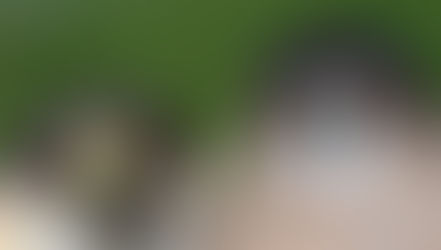How to attract birds to bird feeders - Create a yard to bring in more birds!
- Zach (Head Flocker)
- Aug 2, 2024
- 5 min read
The frustration of hanging a bird feeder and receiving less than a passing glance from your local birds can lead to an abandonment of hope. Do not give up. Do not fret. Birds will come. Here is how to attract those birds just a little faster.

Join our flock to receive regular information on attracting and identifying birds! It is free, and we do not share your information!
What are the five basic suggestions to attract birds to your bird feeders? Use proper bird feeders and birdseed, plant native habitat, provide water, and attract the popular birds. Additionally, you may need a little patience to attract birds. Depending on your location and habitat, it may take several days to a few weeks for birds to discover the smorgasbord you have provided for them.
Navigate through the post:
If you follow the tips explained within these topics, you should have a feather-filled yard in no time!
As an Amazon Associate, we earn from qualifying purchases. Links may lead to affiliate sites.
What is our favorite bird feeder? It is the platform feeder! In particular, we appreciate the recycled plastic Going Green Platform Bird Feeder.
Select proper bird feeders and seed types
Selecting the proper bird feeders and food types can attract the widest variety of birds. At Flocking Around HQ, we use a combination of platform, thistle, and suet feeders for most of the year, and we supplement these feeders with hummingbird feeders during summer. If you want to see our favorite feeder types, read our post on choosing the best bird feeders!
Of course, putting poor-quality seed in a feeder is a quick way to lose the interest of our favorite birds. Our favorite seed types are sunflower, Nyjer, millet, and suet. If you are interested in reading more about selecting birdseed, we have a guide on the very topic! These four seed and food types attract everything from finches to woodpeckers.
Combining proper feeder and seed types with the other suggestions provided here, create a recipe for a bird paradise!
Properly Place Bird Feeders and Birdbaths in Your Yard
When you place your bird feeders and birdbaths, there are a few considerations you must make:
Windows and Bird Feeders
First, never place your feeders and baths too close to windows. When bird feeders are more than 3 feet or less than 30 ft from a window, it can lead to an increase in window strikes. Even with treated windows, feeders that are too close to reflective surfaces can lead to unnecessary bird deaths.
Habitat and Bird Feeders
Placing bird feeders near to and within habitats such as trees and bushes can offer birds a sense of security. However, having bird feeders in a location where they are at risk of being exposed to constant moisture can lead to birdseed becoming mold-ridden. Utilize structure properly by placing bird feeders near places of safety for birds without compromising their ability to stay dry. With birdbaths, never place the water feature under or in trees or brush that can drop organic matter, such as leaves and twigs, into the water.
Attract Birds to Feeders with Bird-Friendly Yards
Yes, bird feeders are an easy way to attract birds to your yard. However, if you want lasting power that attracts a true diversity of bird species, you need strong native habitat. Native plants provide a variety of food sources, such as nectar, berries, and native insects, especially caterpillars. Native plants, especially woody plants, offer structural protections against the weather and predators. Flowers are great, but shrubs and trees provide a nesting and roosting habitat that is essential to birdlife.
What else can native plants do for you? They can lower your water bill, as native plants require less water than exotic species. They also attract butterflies, moths, and bees that provide food for birds but are also just a delight to watch!
We also recommend adding habitat features like brush piles, snags, logs, and rocks/boulders that can provide a plethora of benefits for birds. Secretive sparrows and juncos often favor brush piles. Snags and logs attract woodpeckers and nuthatches. Large rocks with basins can catch rainwater that birds will use for bathing and drinking.
Want to find suggestions for native plants for your yard? We recommend using the Ladybird Johnson Wildflower site or the Audubon Plants for Birds (you do not have to enter an email, just a zip code).
What is the best seed to fill your platform bird feeder? Sunflower seed!
Sunflower seed attracts the widest diversity of birds!
Use Water to Bring Birds to Your Yard and Feeders
Using native habitat and proper birdseed are two cornerstone approaches to attracting birds to feeders. Not all birds use bird feeders. Insectivorous birds are not likely to pay your bird feeder a visit. However, all birds DO require water. Choosing or building the proper water feature can create an oasis for more birds than the typical feeder birds!
Want to learn more about the best birdbaths and water features? Check out our post on birdbaths!
Lure the Popular Birds, AKA the Chickadees to Your Bird Feeders

There are many things you should not lure in this world. However, when it comes to birds, luring is exactly what we must do. There are a variety of ways to lure birds, from decoys to recordings, but when it comes to bird feeders, the birds you want to lure first are the chickadees. Why? Chickadees are the lookout and alarm birds of the avian world. Chickadees of all varieties offer a level of protection that other songbirds appreciate. Other birds appreciate it so much; loose flocks of mixed bird species are frequently found in the vicinity of chickadees.
Another benefit of chickadees is the feeding calls often used when family groups find a food source. Other birds often detect and recognize this feeding call and will follow the chickadees to this new food source. Anytime we set up new feeders at Flocking Around HQ, we always make an attempt to put food out while chickadees are actively feeding in the area.
Chickadees are a delight to watch and listen to, but just as importantly, chickadees can help in attracting other birds to your bird feeder haven.
Photograph the birds at your feeder! We love the Sony RX10 IV!
Attract Birds with Their Basic Needs
Birds need food, water, and shelter. It is that simple. If you provide these three elements within the confines of your yard, you will attract more birds. Yes, you can add additional features like birdhouses, but food, water, and native plant shelter are foundational to attracting birds.
Follow our tips above, and you will have birds in no time!
If you enjoy these flocking posts, register for blog notifications, like us on Facebook, follow us on Instagram and Twitter, and visit our Amazon Storefront.

















